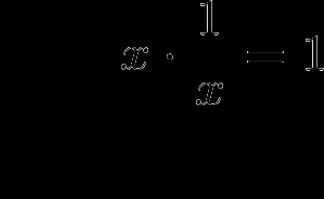Reciprocal Calculator
If you're wondering how to find the reciprocal, we're here to help with this easy-to-use reciprocal calculator.
Below, you can find an explanation of what a reciprocal is and examples of how to calculate and find reciprocals, be it the reciprocal of a fraction or a number.
As you're interested in reciprocals, we suspect that fraction calculators may also be interesting to you. So why not check out our other tools!
- Decimal to fractions calculator — Converts any decimal to a fraction instantly.
- Adding fractions calculator — Useful to determine the sum of up to five fractions.
- Equivalent fractions calculator — Finds a list of fractions equivalent to the one you provided. Also, you can check there if two fractions are equivalent or not.
What is a reciprocal?
A reciprocal in math is one divided by the number in question (also known as the multiplicative inverse).
The reciprocal of x = 1/x
Alternatively, you can say that if you multiply a number by its reciprocal, you'll get 1:

For example, if our chosen number is 5, its reciprocal is 1/5. The multiplication of these two numbers will give us 1:
5 × 1/5 = 5 × 0.2 = 1
The name reciprocal comes from Latin, possibly from the phrase reque proque, meaning back and forth. The reciprocal number to x may be denoted simply as 1/x but also as x-1. Thus, raising the number to the power of minus one is the same as finding its reciprocal.
How to find the reciprocal?
So, in short, how to find the reciprocal of a number?
-
Reciprocal of a fraction
To find the reciprocal of a fraction, switch the numerator and the denominator (the top and bottom of the fraction, respectively). So, simply speaking, the reciprocal of a/b is b/a.
Example: the reciprocal of 3/4 is 4/3
-
Reciprocal of a number
To find the reciprocal of a number, divide 1 by the number.
Example: the reciprocal of 7 is 1/7
-
Reciprocal of a decimal
To find the reciprocal of a decimal, you need to do the same as before - divide 1 by your decimal number.
Example: the reciprocal of 3.25 is 1/3.25
Additionally, our reciprocal calculator will show you the fraction in its simplified form.
Remember that 0 doesn't have the reciprocal, as 1/0 is undefined.
Examples: what is the reciprocal of 4 and 1/2?
We hope that, after our explanation, you now understand the concept of a reciprocal. In that case, let's look at two examples to check how this calculator works!
Example 1: What is the reciprocal of 4?
- Is your number a fraction? Not this time! Choose No from the drop-down list. (If you really want, you can leave it as the fraction option and then choose 1 as the denominator).
- Input the number for which you'd like to find the reciprocal, which is 4.
- Tadaa! That's all you need to do! The reciprocal calculator shows that the reciprocal of your number is 0.25, or, as a fraction, 1/4.
Example 2: What is the reciprocal of 1/2?
- Again, start with the question: is the number a fraction? Pick Yes this time.
- Enter the numerator (top) and denominator (bottom) of your fraction into the appropriate fields. So, in our case, input 1 as the numerator and 2 in the denominator box.
- The reciprocal calculator finds the answer - the reciprocal of 1/2 is 2.
FAQs
What is the reciprocal of 5?
0.2. Since we can write 5 as 5/1, if we take the reciprocal, it becomes 1/5, which is 0.2 in decimal form.
What is the reciprocal of 2/3?
3/2 or 1.5. Taking the reciprocal of a fraction means swapping the numerator and the denominator around.
What is the reciprocal of 1?
1. Since 1 in fractional form is written as 1/1, taking the reciprocal (swapping around the numerator and the dominator) results in the same thing, 1/1, which is 1.
How do you find the inverse of a fraction?
You find the inverse of a fraction by exchanging the numerator (top number) with the denominator (bottom number) – taking the reciprocal of the fraction. For example, the inversion of the fraction 5/4 is 4/5.